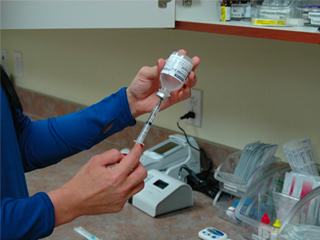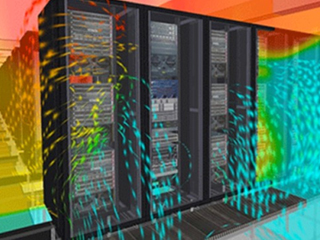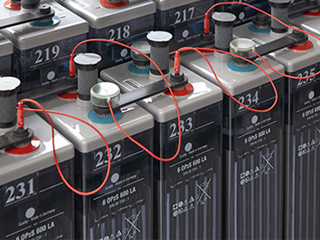What is the Internet of Things (IoT)?
It is the physical devices around the world that are now connected to the internet. Each of these devices has the capability of collecting and sharing data. The number of Internet of Things devices is continuously increasing each day. There was an estimated 24billion IoT devices recorded last year (2020).
A few of these examples are:
- Light bulbs
- Cars
- Cell phones
- Cameras
Predictions from statista.com and idc.com, there will be growth in IoT up to 500% by 2025. This will be the highest growth to record if this materialized in the next five years.
However, this growth will not be easy for data centers. How so? Let’s find out!
The Impact of Internet of Things in Data Center
-
Increase in Data Storage Demand
More devices mean more data to process, analyze and store. Therefore, the growth of the internet of things corresponds to an increase in demand for storage space as well. This means there will be more data centers to emerge and innovative ways and technology to optimize storage capacities.
-
Inbound Data Flow and Network Requirements
The current design of data centers is to support large amounts of data for enterprises. But the rise of the Internet of Things will reverse this and will, instead, be the receiving end of data generated from individual devices. Therefore, a considerable surge in data consumption and traffic data center’s inbound bandwidth has to adjust. When the storage is full, that’s it- no more space to store data. The options will only narrow down to make a new facility or expand storage capacity. This, of course, will both require additional investment.
-
Security Improvements & Issues
The increasing number of IoT devices will make networks more vulnerable to cyber-attacks.
Facebook and Twitter, alongside various news and security sites, were just some of the popular services that have been taken out by a vast Denial-of-Services (DDoS) attack last October 2016. And IoT devices played a massive role in generating traffic for that DDoS attack.
There were 100,000 infected devices in this attack, including:
- Cameras
- DVRs
- Baby monitors
- Smoke detectors (smart sensors)
And this bulk was said to be only 20% of the attack.
With this, the security landscape must be designed to deal with this ever-growing range of cyber threats. Also, as more and more of our data is digitized and stored, Data Centers will need to ensure the highest level of data privacy.

Photo Credit: dgtlinfra.com
-
Building Data Center in New Locations
As mentioned before, more Internet of things devices are coming means more data storage is needed. Therefore, it requires more facilities and equipment. The growing need for data management does not end with storage and facility. It stretches up to locations and a whole space to accommodate incoming changes. In expanding facilities and equipment, power supplies, back-ups, and cooling system will also have to be considered. In this matter, a data center will have to decide if they can adjust their existing facility or build a new data center.
-
Cost Efficiencies
Cost efficiency will also follow closely with the previous one. Power supplies, back-ups, and adjustments in cooling systems have related costs. Building a new data center might cost more initially but can be operated with a whole new generation of cost-efficient equipment models.
Expanding data centers also include the concerns of power consumption. As the power consumption increases, the carbon footprint also increases, which can harm the planet. However, new data centers can now adapt to sustainable ways of generating power, such as solar panels and wind-generated power. This sustainable power source does not help to lessen the data center’s carbon footprint but also to data centers can benefit through this as it is an effective way to lessen the operation costs.
Solutions for Increasing Data Center Operations
Managing a data center is no easy task. DCIM helps planning a framework of effective management. DCIM is the tool to monitor, measure, and control the data center. It also helps make effective decisions regarding equipment utilization, energy consumptions, monitoring environmental status, and many more.
In expanding data centers, as the demand requires, it is important to have a reliable source monitoring data to know the extent of the data center’s status. These tools can also lead the data center into a more cost-efficient and sustainable expansion.
Expanding the data centers means additional equipment, pieces of hardware to make up the moving parts necessary to protect critical information. Datacenter facility must always be committed to keeping track of all environmental variables for each piece of equipment, especially with the growing needs. This will be helpful for the technical team to remain aware of the current status and be immediately informed if a problem emerges.
Here are some environmental factors a data center must be aware of during this time of unpredictable growth:
Temperature
Adding more equipment to the data center makes it important to scale up the temperature monitoring system and keep up with the growing facility. Its typical temperature monitoring includes multiple temperature sensors located on the top, middle, and bottom of racks and air conditioning intake and discharge vents to measure heat generation. This is to avoid equipment overheating and to regulate the cooling system, and ensure overall efficiency. Aside from that, temperature monitoring can help the facility save energy while ensuring that sensitive IT equipment is not compromised.
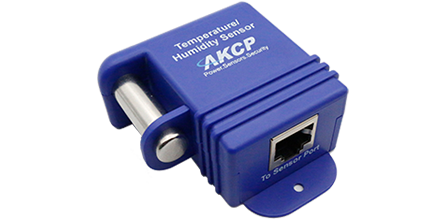
Single Port Temperature and Humidity Sensor
Humidity
Controlling humidity is especially important if the data center expands in terms of capability but not in space. Additional equipment may cause high humidity in the facility that may result in corrosion. Humidity sensors are recommended to be deployed at strategic locations both inside and outside the rack to monitor humidity levels.
Airflow
Airflow recommendations depend on the size of the facility environment and the amount of equipment within. You may inspect or assure that the cure HVAC system of the data center can sustain with the expansion. Air pressure discrepancies may result in hot and cold aisle partition leaks and destabilize humidity and temperature controls. Keeping these systems in check will ensure that cooling and containment systems are functioning properly and allow for continued system optimization.
Power & Voltage
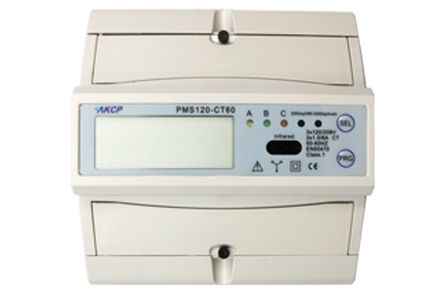
Power Monitoring Sensor
One of the considerations when expanding data centers is power supply as the growth will require more power consumption. It is crucial to ensure that proper environmental monitoring measures are in place to prevent an unforeseen power outage.
An uninterruptible power supply (UPS) should always exist within the colocation environment to provide server redundancy in the event of a failure. By monitoring the electrical current coming into the data center, an organized shutdown of IT equipment can be performed if necessary and prevent widespread equipment failure. Power consumption rates can be logged in order to make the environment more efficient.
AKCP Environmental Monitoring Solutions
AKCP has been in the industry for the past 30+ years and a wide range of experience in professional sensor solutions. AKCP offers various wired and wireless sensors perfect for monitoring the environmental status of the data center. Whether you are looking for a few temperature and humidity sensors for your computer room or rolling out a multi cabinet monitoring solution, AKCP has an end-to-end data center monitoring solution including sensors and AKCPro Server DCIM software.
Our Wireless Tunnel™ System builds upon LoRa™ technology, with specific features designed to meet the needs of data center monitoring. Wireless sensors give rapid deployment, easy installation, and a high level of security. It is the only LoRa based radio solution designed specifically for critical infrastructure monitoring, with instant notifications and sensor threshold level checking.
Centralized data center monitoring with AKCPro Server. This DCIM monitors all AKCP sensors, as well as third-party devices via SNMP or Modbus. Drill-down mapping, reports, alerts, graphing, synchronization of video with sensor events, access control administration, asset tracking, and cabinet rack maps are all featured. Install on your server or run the platform from the AKCP Cloud.
Reference Links:
https://www.nlyte.com/solutions/data-center-infrastructure-management-dcim/
https://www.gartner.com/en/information-technology/glossary/data-center-infrastructure-management-dcim/
https://searchconvergedinfrastructure.techtarget.com/definition/data-center-infrastructure-management-DCIM


